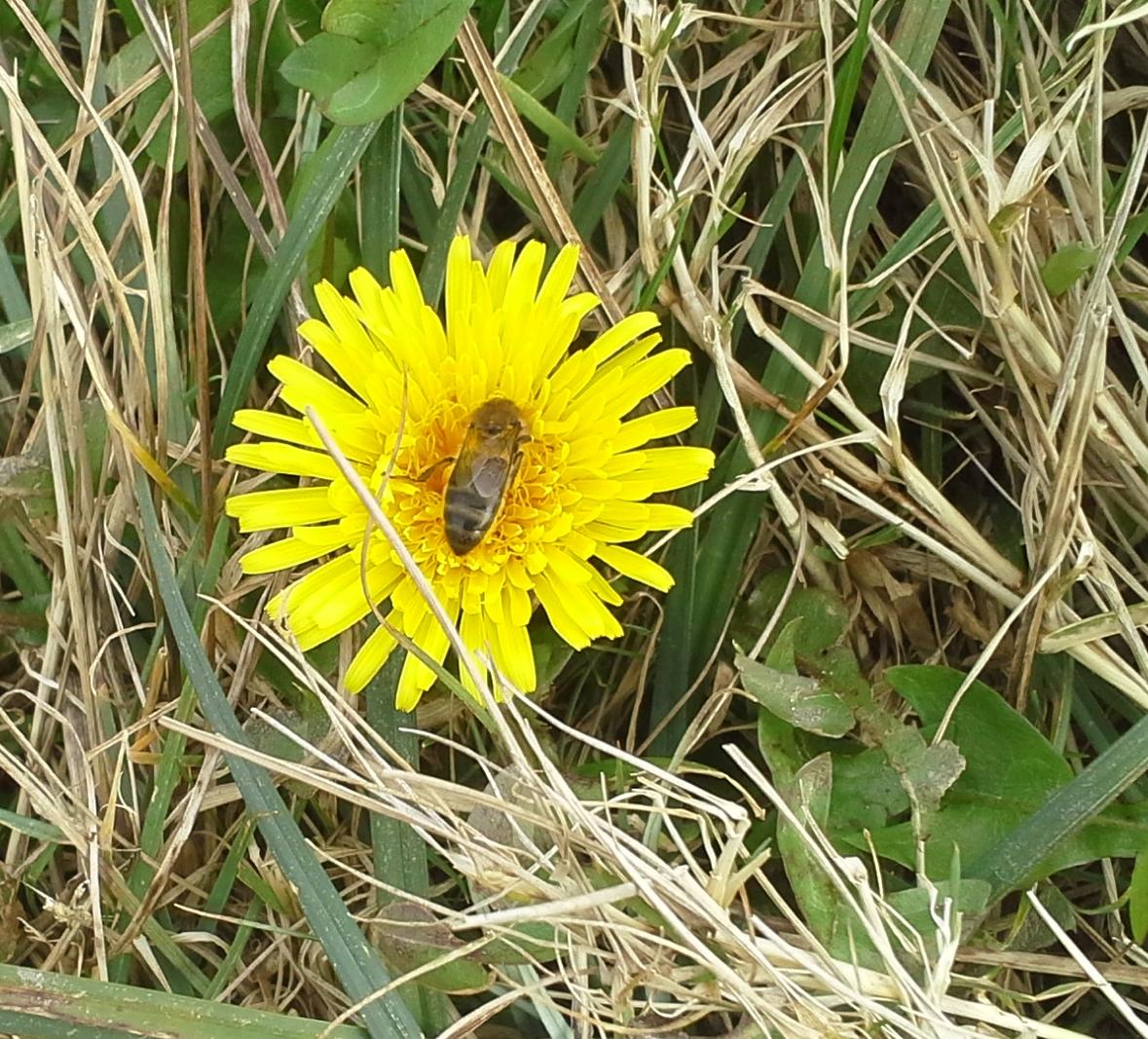 So what is it, again, that we have against dandelions?
So what is it, again, that we have against dandelions?
I mean, they are really cute, they’ll grow anywhere with no additional water other than what they get in nature.
They reseed themselves like mad. They prevent soil erosion.
Every part of the plant is edible in some form (although those with allergies—and specifically latex allergies—will want to do some research first). They provide lovely, bright, cheerful flowers. They are the first food of the Spring for honeybees. They’re free, they make great ground cover, etc.
What’s not to like?
“It gives one a sudden start in going down a barren, stony street, to see upon a narrow strip of grass, just within the iron fence, the radiant dandelion, shining in the grass, like a spark dropped from the sun.” ~ Henry Ward Beecher (1813-1887)
My next questions: Why aren’t we cultivating and growing dandelions for lawns (on purpose) instead of grass? Why aren’t we letting them take over our lawns?
It would be cheaper, more colorful, greener/more eco-conscious, easier, etc. They need less water than a grass lawn, use no chemicals, protect the watershed, provide food and tea, etc.
Is it because they have been classified as a noxious weed in some regions?
And who does this classification?
It’s probably my neighbor (who loves me, by the way, because of all the seeds from mine that blow into his yard), who really does love chemicals of all sorts. I don’t even know what any of them are. How can so many different types of chemicals—that do so many different, mysterious, deadly, chemically things—be made for just a lawn of grass?
Why are we obsessed with having grass lawns in the U.S.? And why must they be the chemical companies’ picture of “perfect?”
And why doesn’t anyone wonder where all those chemicals actually go?
They don’t just sit there on the grass. They really do, at some point, sink into the earth and just keep going. They are poison. They get into our entire eco-system and mess it up in all kinds of ways that I’m too scared to research (I’ll leave that to you to do for yourself if you need more info).
I call my lawn “the salad” instead of “the lawn,” because it is the correct color and height (most of the time), but is comprised of a wonderful mixture of greens—of which, grass is the minority.
“Dandelions are smart. Their response to frequent mowing is to grow flowers on shorter stalks. As anyone who tries to keep a lawn free of weeds knows, the dandelion’s long tap root must be removed completely or the plant will come right back.”
I cannot find a reference to it, but I was told by someone that in Beatrix Potter’s time, dandelions used to be cultivated and grown in gardens, like flowers. And indeed, there are places right now where dandelions are a cash crop.
Dandelion greens are very spendy in the market place.
At one site, I found dried dandelion leaves for $29/pound.
“Vineland, New Jersey is the birthplace of Welch’s grape juice and the mason jar. Yet, it is more famous for growing dandelions. In Vineland, dandelions are a cash crop and home to one of many annual dandelion festivals.”
So Dandelions look really good to me. And they are so cheerful!
And even in their “worst” stage—you know, when the seeds have already taken flight and invaded the neighbors’ yards and they’re standing there all bare and leggy? They still have a kind of artistic beauty to them, don’t ya think?
(I can feel chemical-hounds with “perfect” lawns everywhere, shutter.)
Don’t have them already peeking up through your lawn and actually want to be the bane of your neighborhood and cultivate the same love that my neighbors have for me by starting some from seeds?
Good luck with that! And Amazon sells Dandelion seeds.
Relephant:
Spring Tonic Soup & Salad For the Senses. {Vegan}
Author: Grace Cooley
Editor: Renée Picard
Photo: courtesy of MorgueFile.







Read 2 comments and reply